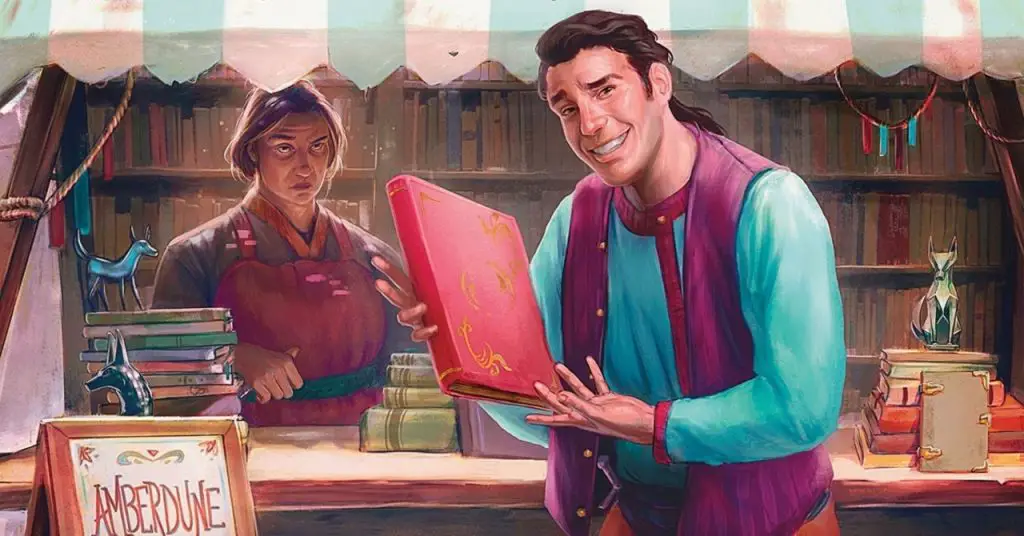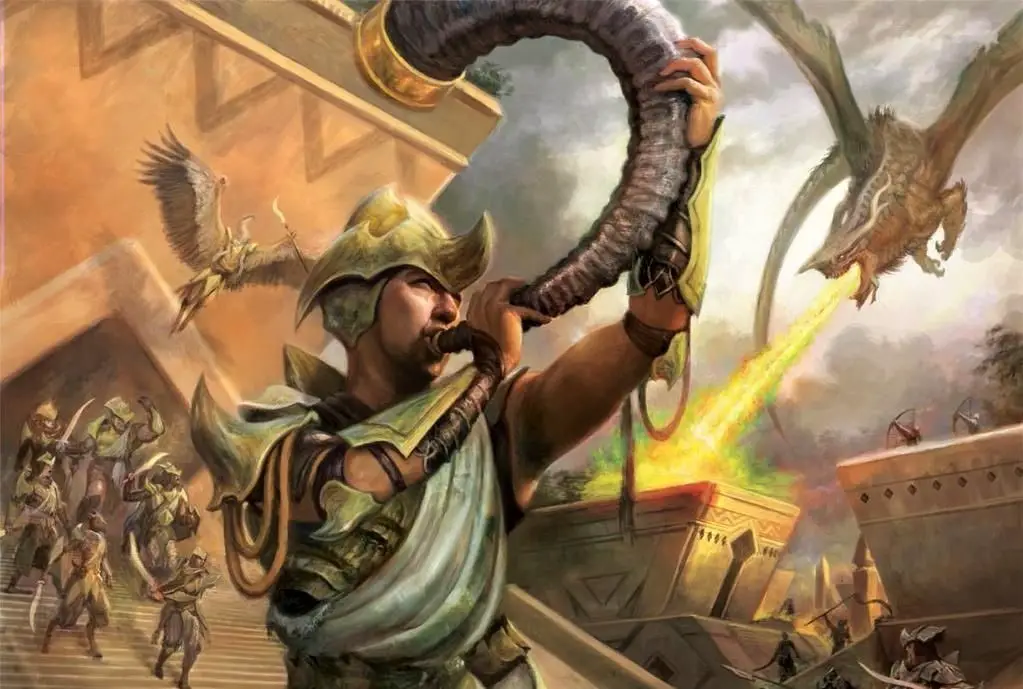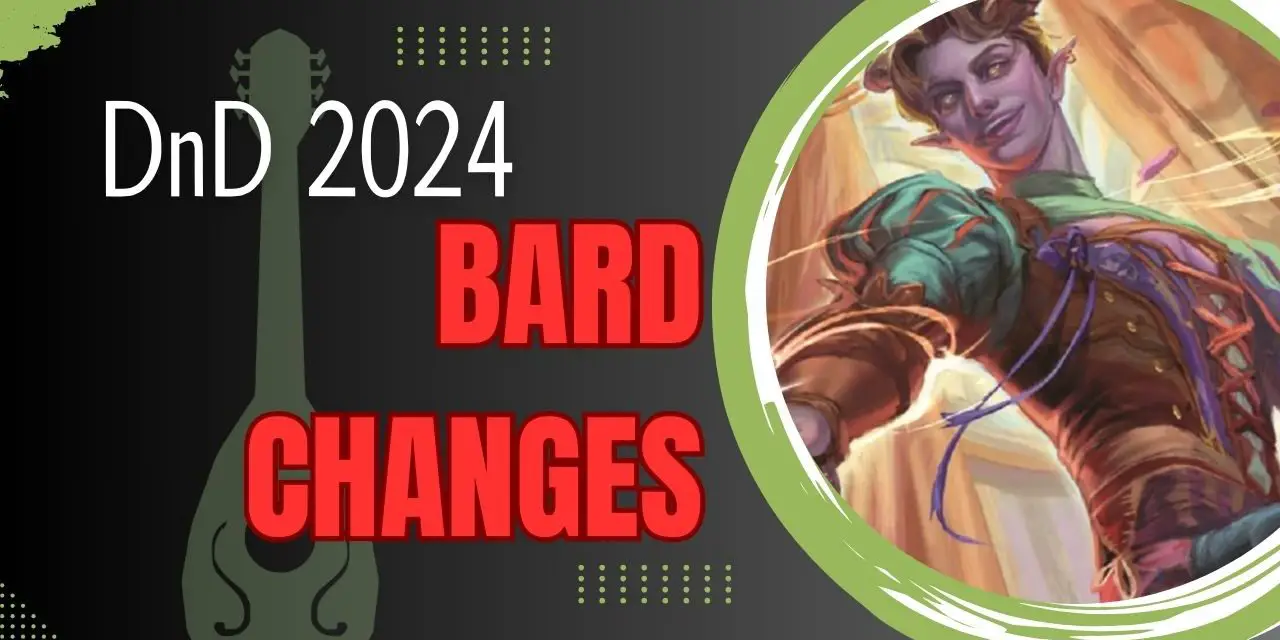The Bard continues to be a key character in the 2024 Player’s Handbook, maintaining its charm and effectiveness with familiar features like Bardic Inspiration.
Enhanced access to Bardic Inspiration, an improved Countercharm ability, and the introduction of the Words of Creation spell pairing highlight the updates to the class. Additionally, the 2024 version also introduces a brand new subclass: the College of Dance.
This article explores the essential changes to the 2024 Bard, showcasing new abilities and features. While extensive updates are covered, some minor or unchanged aspects may not be highlighted.
What’s New for the 2024 Bard?
The D&D 2024 Bard has received several changes that enhance their gameplay and provide more flexibility.
Despite the changes, many features have remained largely intact, solidifying the Bard’s role within the game.

Bardic Inspiration
The changes start right at level 1 with Bardic Inspiration.
Bards can now grant Bardic Inspiration to a creature who can hear or see them, and the creature has an hour to use it instead of the previous 10 minutes.
Additionally, they can choose to use Bardic Inspiration after a creature fails a D20 Test, making it more strategic. Nothing is quite as irritating as giving Bardic Inspiration to allies who then never use it for fear of wasting it before that “perfect moment” that may or may not ever come.
Bardic Inspiration is meant to be used and this new approach (combined with Font of Inspiration) greatly encourage it!
Expertise and No More Song of Rest
Expertise is now granted earlier, at level 2 instead of level 3, allowing Bards to specialize in their skills quicker.
The Song of Rest feature has been removed, making way for more focus on using Bardic Inspiration, spellcasting, and acquiring expertise in skills. I’m a little salty about this, but I also understand the decision.
D&D 2024 Bard Subclasses
At level 3, Bards choose their subclass.
This includes a new subclass called the College of Dance, which focuses on turning the magic of creation into a physical art form.
As an unarmored Bard that is moving gracefully around and making unarmed strikes, it’s almost like a Bard/Monk hybrid. Not gonna lie; I’m pretty excited to make a Capoeira Bard!
There are changes to existing subclasses as well.
We’ll go into more detail of each subclass as we release their dedicated class guides. For now, we’ll just focus on the broad strokes.
The College of Glamour got some great improvements. Enthralling Performance was replaced with Beguiling Magic which doubles down on your ability to play all kinds of enchanting mindgames with those around you. Other features (Mantle of Inspiration, Mantle of Majesty, and Unbreakable Majesty) all got some love as well that does a lot to really bring out the mechanics and theme of this subclass.
The College of Lore no longer has immunity rules against Cutting Words (i.e., creatures that can’t hear you or are immune to charms can now be affected). Peerless Skill won’t consume your Bardic Inspiration on a failure and the Magical Discoveries feature falls more in line with the reworked Magical Secrets.
Finally, the College of Valor can use a Simple or Martial weapon as a spellcasting focus and cast a cantrip as part of their Extra Attack.
Font of Inspiration
At level 5, Bards gain Font of Inspiration, which lets them expend a spell slot to regain one use of Bardic Inspiration. This is in addition to the standard use of recovering Bardic Inspiration uses on a short rest.
Don’t let how brief this change is fool you: it’s a massive deal. Because it doesn’t take an Action or anything, you can stay very adaptable and still provide valuable Bardic Inspiration to your allies “on the fly” even if you’re out of Bardic Inspiration uses!

Countercharm
Countercharm is now a level 7 feature and functions as a Reaction used after a creature fails a saving throw to avoid being Charmed or Frightened.
I’ve played as and with a ton of Bards throughout 5e’s 10-year lifespan and I can only think of one time that Countercharm was actually used successfully. A Bard would use it (requiring their action) and then the enemies would just, you know, not try to Frighten or Charm anyone that turn.
It usually felt like a waste…
But the subtle change of making Countercharm a reaction that can be triggered after someone fails a save against being frightened or charmed makes this much more useful. Oh, and the target that you’re helping with this gets to make that reroll with advantage!
Still not sold?
What if I told you it has unlimited uses? That’s the power of Countercharm!
Magical Secrets
Magical Secrets at level 10 now includes spells from the Cleric, Druid, and Wizard spell lists, which can be chosen whenever the Bard’s number of prepared spells increases. They can also replace any prepared Bard spell with a spell from these classes.
Note that, unlike the 5e Magical Secrets, this new version works any time you can add spells to your prepared spell list.
Considering how powerful the Cleric, Druid, and Wizard lists are, you’ll have no shortage of great options at your disposal to help you stay adaptable!
Superior Inspiration
At level 18, Superior Inspiration now allows Bards to regain up to 2 uses of Bardic Inspiration instead of just one.
This was admittedly a disappointing capstone feature in 5e, so I’m glad to see these changes. It now restores TWO (instead of only one…) Bardic Inspiration uses when you roll initiative and find yourself with no Bardic Inspiration. If you only have one charge when you roll initiative, you’ll still gain one more to put you at two total.
Nifty!
Epic Boon
As with the other classes, Bards can select one of twelve Epic Boons at level 19. If they would prefer something else, they can instead choose an additional feat.
Epic Boons are pretty cool, but we’ll have to cover those in a different article, so stay tuned!
Words of Creation
At level 20, the Bards’ Words of Creation ensures they always have the powerful spells Power Word Heal and Power Word Kill prepared.
They can also potentially target a second creature with either spell (as long as the targets are within 10 feet of each other), making them even more formidable spellcasters.
Now THIS feels like a more proper capstone feature!
Redesigned with a decade of community feedback, this essential guide is bigger and better than ever.
Create unforgettable characters with 12 core classes, 48 subclasses, and 10 distinctive species. Enjoy stunning new artwork and fresh gameplay features like Weapon Masteries and a revamped Tools and Crafting system.
Thoughtfully organized for ease of use, this 384-page book is your key to endless adventure. Get your copy now!
Conclusion – D&D 2024 Bard Changes
The 2024 Bard combines powerful spellcasting with an impressive toolkit of skills, making them one of the most versatile characters in an adventuring group. They can effortlessly captivate with tales of martial prowess, maneuver gracefully in combat, and mesmerize with their charms.
After all, one should never underestimate a Bard!
The 2024 Player’s Handbook offers a refreshed experience for creating and playing a Bard, delivering an engaging performance both in and out of battle. It feels equal parts new and familiar in a way that I personally enjoy.
But what are your thoughts about the D&D 2024 Bard changes? Will you be embracing the new rules of the Bardic Arts or does this all hit a sour note for you? Drop your thoughts in the comments and let’s get the conversation rolling!
And don’t forget to sign up for the Tabletop Joab newsletter below. It’s the best way to get all the latest D&D news, guides, and more delivered straight to your inbox!









